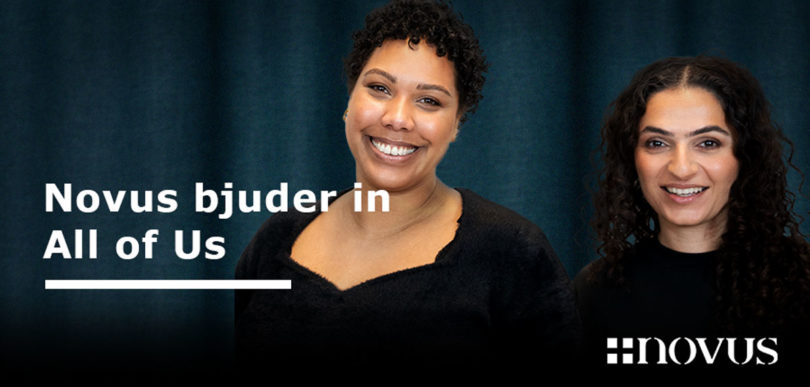
3 ways to create inclusive communication – for real
Inclusive communication. Something that is becoming more of a buzzword than truth. There is a lot of talk about it. Most people want it and say they prioritize it. But what is it really?
Inclusive communication is about portraying all people and realities in society, regardless of age, gender identity, religion, ethnicity, body shape or functional variation. So are you automatically inclusive in your communication if you include everyone?
The risk with diversity linked to communication is that it often does not become inclusive at all. By that we mean that brands in their material like to use racialized people, different age groups or others who are made invisible in the media landscape, but that they still operate in a normative context. A context, a scenario, a place or story that still belongs to the reality of the norm. People are placed in a shop window to assimilate and look good in statistics. Because it looks good in measurements when you show different types of bodies, we can count on us to show different ones.
But whose story are we telling, whose reality are we actually in? Is it still the white, thin, young, heteronormative reality? Because then it’s not real inclusion. Not when we force people into someone else’s reality.
What we are looking for is that all companies, brands and organizations must first decide why they want to be inclusive in their communication. And we have three suggestions as to what this why might be:
1. Reach out and affect
A Sweden that is one of the world’s most multicultural countries requires us to portray, engage and relate to different subcultures. A general view of society means that you risk missing many large groups in society. If we involve more people, we also build the relationship with the brand among more people – you simply broaden your target group.
2. Differentiate
We know that communication that breaks stereotypical norms attracts and engages more target groups. Standing out in the noise of all other marketing and communication is important to differentiate yourself. By being inclusive in communication, you differentiate yourself strongly from the majority and take your own place as a brand.
3. Normalize
Marketing and communication build standards. It depicts people and often reproduces tropes and stereotypes. Therefore, it has a big role in breaking prejudices and stereotypes and instead putting people in their own context, their own reality and portraying them from their own perspective. If you do this, you can increase normalization through your communication and contribute to reducing prejudice in society.
Once you set this why, the direction also becomes clear and can be built on from different parts of the organization, just like when you lay the foundations for brand roles or communication platforms.
The beauty of this particular topic is that whether you want to include to reach out and affect, differentiate or normalize – they do each other’s jobs. If you are looking to differentiate, you will automatically reach out, touch and normalize and vice versa. But to do this successfully, you need a clear purpose and answer to the question – why should we include in our communication?
Roshanak Fatahian and Nicole Kavander, communicators and founders of All of Us
All of Us works with lecturing and training companies, organizations and schools in diversity and inclusion. The work also includes recruitment and organizational change as well as business development with a focus on diversity. Since its inception in 2018, All of Us has been named Role Model of the Year in the Diversity Index Awards 2021, #2 in Näringslivets Superkommunikatörer 2019, nominated for Rättvisepriset, sits on the boards of Komm’s, Open Act’s and the Swedish Fashion Association and is an active voice in opinion formation around diversity and inclusion.
Every month we offer knowledge, facts and reports in the area of branding and communication in the form of Novus Brand Letter. Do you want to be a part of it? Subscribe here.


